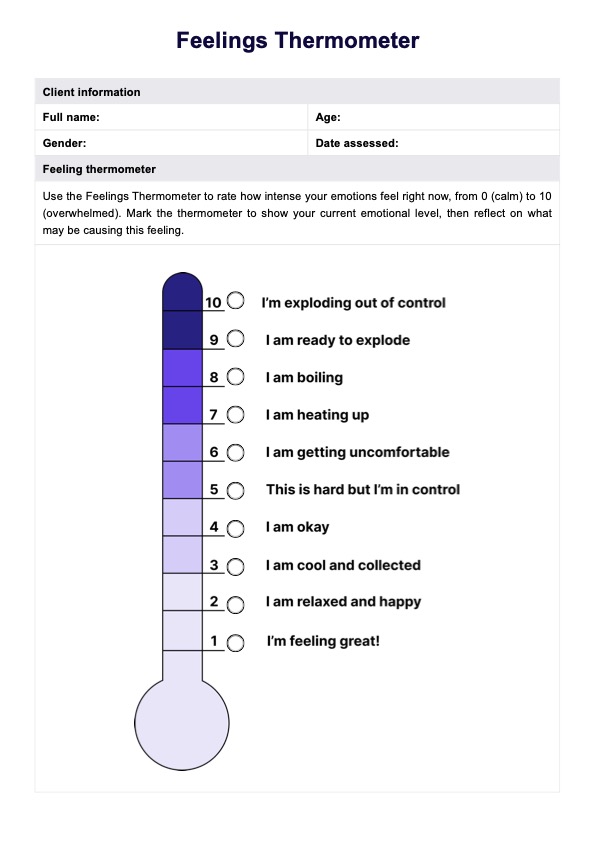Feelings Thermometers are commonly used by psychologists, counselors, teachers, parents, and children to improve understanding and communication of emotions.

Feelings Thermometer
Explore the benefits of Feelings Thermometers, an effective tool to foster emotional literacy. Learn how Carepatron integrates it for optimal emotional health.
Use Template
Feelings Thermometer Template
Commonly asked questions
Feelings Thermometers can be used anytime an individual needs help understanding or expressing their emotional state. It can be particularly beneficial during therapy sessions or emotional literacy lessons.
The individual identifies their current emotional state on the thermometer and marks it. Over time, they can track their emotional states, recognize patterns, and develop effective coping strategies.
EHR and practice management software
Get started for free
*No credit card required
Free
$0/usd
Unlimited clients
Telehealth
1GB of storage
Client portal text
Automated billing and online payments











